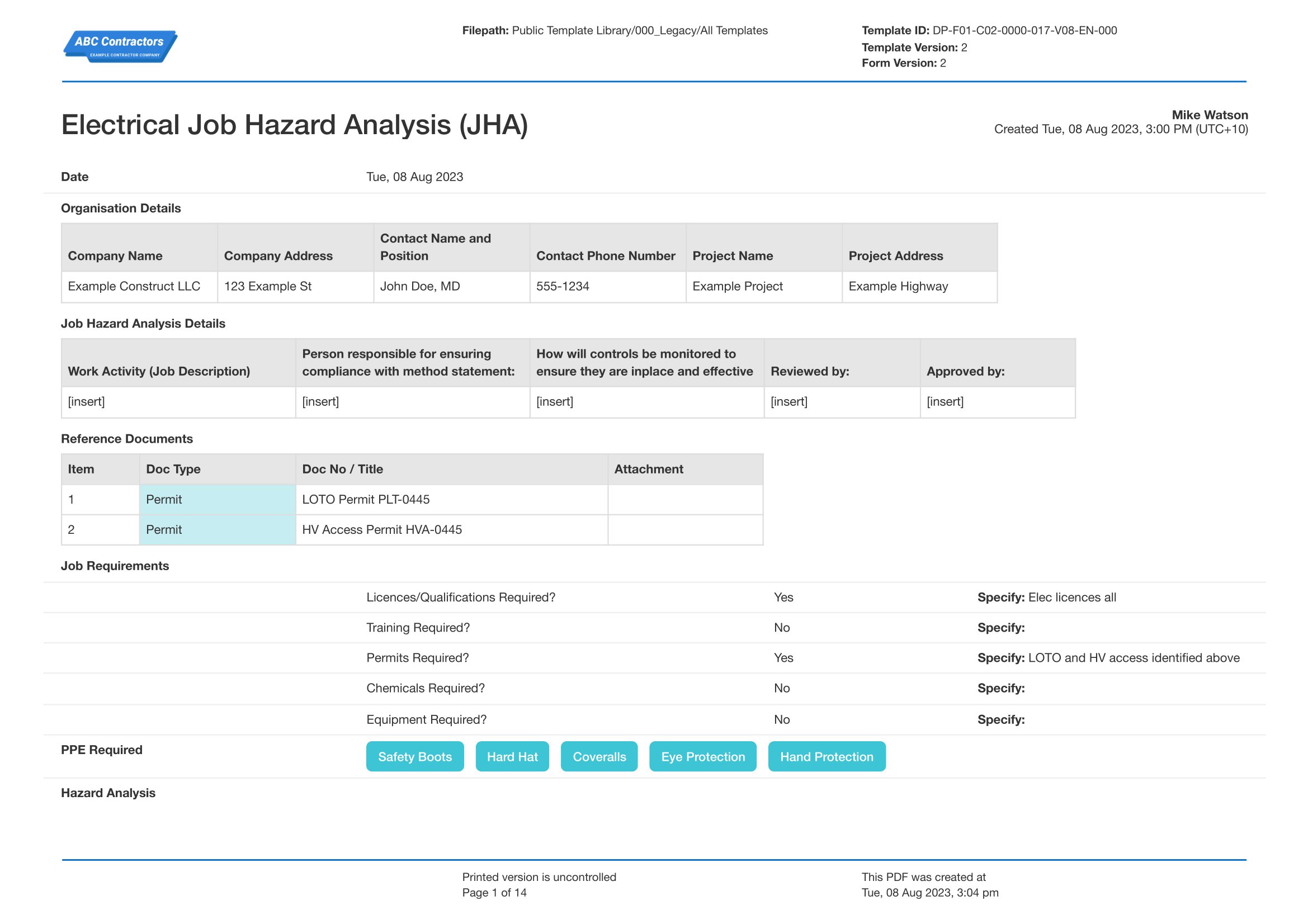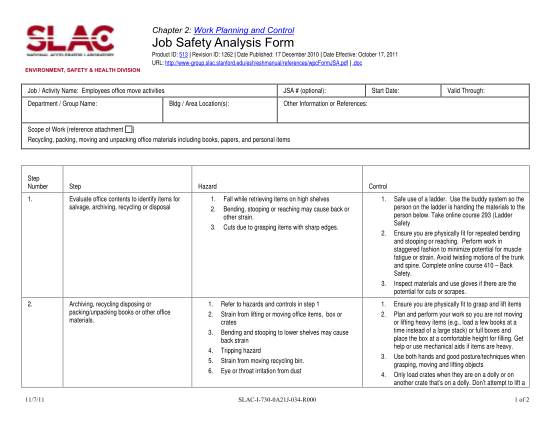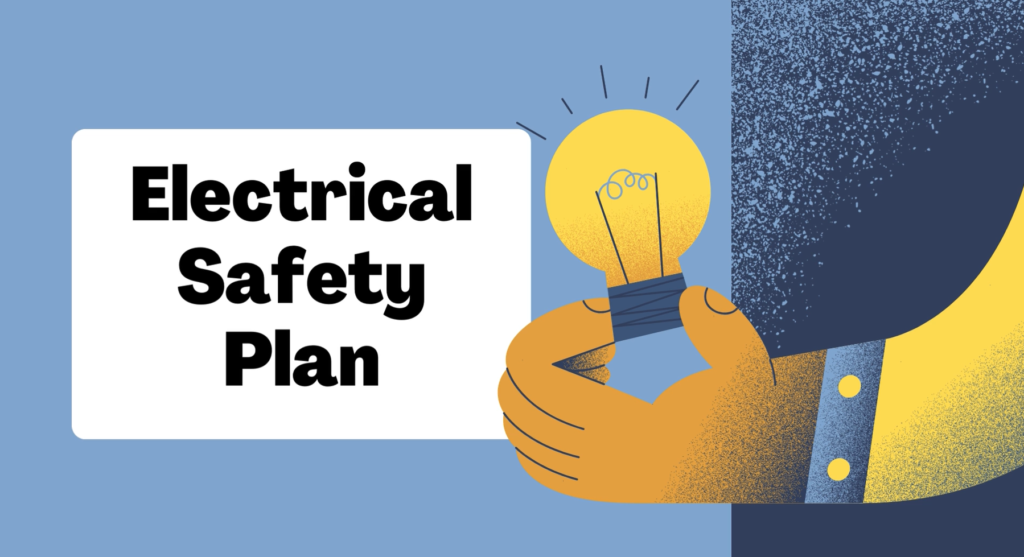Electrical job safety is crucial. It protects workers from serious hazards.
An effective electrical job safety plan is essential for any workplace. It ensures that all safety measures are in place to prevent accidents. Electrical work can be dangerous, involving high voltage and complex equipment. Without proper planning, workers face risks like shocks, burns, and even fatalities.
A well-structured safety plan outlines protocols and procedures. It addresses potential hazards and provides guidelines for safe practices. This plan is not just about compliance; it’s about creating a safe working environment. Every worker should be aware of the safety protocols. This knowledge helps in minimizing risks and ensures everyone returns home safely. Let’s explore the key components of an effective electrical job safety plan.
Importance Of Electrical Job Safety
The importance of electrical job safety cannot be overstated. Workers face numerous risks daily. These risks can lead to serious injuries or even fatalities. Establishing a solid electrical job safety plan helps mitigate these dangers. It ensures a safe working environment. This section will discuss why electrical job safety is crucial. We will focus on two main aspects: protecting workers and ensuring compliance.
Protecting Workers
Workers’ safety should always come first. Electrical jobs involve high risks. Exposure to live wires or faulty equipment can be deadly. Proper safety measures reduce these risks significantly. Regular training sessions keep workers informed about safety protocols. They learn how to handle emergencies effectively. Safety gear, like gloves and helmets, is essential. It provides an extra layer of protection. Implementing a safety plan saves lives and prevents injuries.
Ensuring Compliance
Compliance with safety regulations is mandatory. It is not optional. Regulatory bodies set these rules to protect workers. Non-compliance can result in hefty fines. It can also lead to work stoppages. A comprehensive safety plan ensures all regulations are met. It keeps the company in good standing. Regular audits help identify potential safety issues. Addressing them promptly avoids legal troubles. Compliance also boosts the company’s reputation. It shows a commitment to worker safety.

Credit: sitemate.com
Identifying Hazards
An electrical job safety plan must focus on identifying hazards. Recognize risks like exposed wires and faulty equipment. Always ensure proper safety measures are in place.
Identifying hazards is crucial for ensuring safety in electrical jobs. This step involves recognizing potential dangers to prevent accidents and injuries. By understanding common electrical hazards and conducting thorough risk assessments, you can create a safer working environment.
Common Electrical Hazards
Electrical hazards are common in many workplaces. Knowing these dangers can help prevent accidents. Some frequent hazards include exposed wires, overloaded circuits, and faulty equipment. Wet conditions also increase the risk of electric shock. Poorly maintained tools may cause short circuits or fires. Awareness of these hazards is the first step in managing them effectively.
Risk Assessment
Risk assessment is essential for identifying potential electrical hazards. Start by inspecting the work area and equipment. Look for any exposed wires or damaged tools. Check if circuits are overloaded. Evaluate the environment for wet conditions. Document all findings and prioritize them based on severity. Create a plan to address each hazard. Regular assessments ensure ongoing safety.
Safety Training Programs
Ensuring the safety of electrical workers is paramount. Safety training programs play a crucial role in achieving this goal. They provide the necessary knowledge and skills to prevent accidents and injuries. This section explores the importance of employee training and continual education in maintaining a safe working environment.
Employee Training
Employee training is the foundation of a safe workplace. New hires must undergo comprehensive safety training. This includes understanding hazards, proper use of equipment, and emergency procedures. Regular refresher courses keep safety knowledge up-to-date. Hands-on training allows employees to practice safety techniques in a controlled environment. This boosts confidence and reduces the risk of mistakes.
Continual Education
Continual education is vital for experienced workers. The electrical field evolves with new technologies and standards. Ongoing training ensures employees stay current with industry changes. Safety seminars and workshops offer opportunities for learning. Online courses provide flexible options for busy schedules. Encouraging continual education fosters a culture of safety. It shows a commitment to employee well-being and professional growth.
Credit: www.necanet.org
Personal Protective Equipment (ppe)
Personal Protective Equipment (PPE) is vital for ensuring safety in electrical jobs. It minimizes the risk of injuries from electrical hazards. Wearing the right PPE can save lives and prevent accidents. Let’s delve into the different types of PPE, their proper use, and maintenance tips.
Types Of Ppe
There are several types of PPE for electrical work. These include gloves, helmets, safety glasses, and face shields. Electrical gloves protect hands from electric shocks. Helmets guard against head injuries. Safety glasses and face shields protect eyes and face from sparks and debris. Another important type is flame-resistant clothing. It shields the body from burns. Each type of PPE has a specific purpose. Choosing the right PPE is crucial for safety.
Proper Use And Maintenance
Using PPE correctly is as important as wearing it. Always inspect PPE before use. Look for any damage or wear. Replace damaged PPE immediately. Ensure a proper fit. Ill-fitting PPE can be ineffective. Follow the manufacturer’s instructions for use. Proper maintenance extends the life of PPE. Clean PPE regularly. Store it in a dry, cool place. Avoid exposure to direct sunlight. Regularly check for wear and tear. Replace PPE as needed. Proper care ensures maximum protection.
Safety Procedures And Protocols
Creating a safe work environment for electrical jobs is crucial. Safety procedures and protocols help protect workers from injuries and accidents. Following these protocols ensures everyone knows how to handle potential hazards.
Lockout/tagout Procedures
Lockout/Tagout procedures are essential for electrical safety. They prevent accidental equipment start-ups during maintenance. Here is a simple step-by-step process to follow:
- Identify all energy sources.
- Turn off the equipment.
- Isolate the equipment from energy sources.
- Apply lockout/tagout devices.
- Release stored energy.
- Verify the isolation.
Make sure all workers understand these steps. Regular training is key.
Emergency Response Plans
Emergency response plans are vital. They outline actions to take during an emergency. Here are the essential components of an emergency response plan:
- Emergency contact numbers: Ensure they are visible and accessible.
- Evacuation routes: Clearly mark and communicate these routes.
- First aid: Ensure kits are available and workers know their locations.
- Fire extinguishers: Make sure they are accessible and workers are trained to use them.
Regular drills help keep everyone prepared. Practice makes perfect.
| Component | Details |
|---|---|
| Emergency contact numbers | Visible and accessible |
| Evacuation routes | Clearly marked |
| First aid | Available kits |
| Fire extinguishers | Accessible and trained personnel |
Safety is a shared responsibility. Following these protocols can save lives.
Regular Safety Audits
Regular safety audits are essential for ensuring a safe work environment. They help identify potential hazards and ensure compliance with safety standards. Conducting these audits regularly can prevent accidents and protect workers.
Inspection Schedules
Creating a detailed inspection schedule is crucial. Inspections should be conducted at regular intervals. This can be weekly, monthly, or quarterly, depending on the work environment. Regular inspections help maintain a safe workplace.
| Frequency | Areas to Inspect |
|---|---|
| Weekly | Equipment, tools, and PPE |
| Monthly | Electrical panels, wiring, and outlets |
| Quarterly | Storage areas, emergency exits, and fire extinguishers |
Following a set schedule ensures nothing is overlooked. It also helps in early detection of potential issues.
Audit Checklists
An audit checklist ensures a thorough inspection. It lists all areas and items to inspect. This helps in maintaining consistency and thoroughness.
- Tools and Equipment: Check for wear and tear.
- Electrical Panels: Ensure proper labeling and functionality.
- Wiring: Inspect for fraying and proper insulation.
- PPE: Verify availability and condition.
- Emergency Exits: Ensure clear paths and working signs.
Using a checklist ensures all safety aspects are covered. It also helps in documenting findings and corrective actions.
Documentation And Recordkeeping
Proper documentation and recordkeeping are critical for electrical job safety. They help track incidents, ensure compliance, and maintain a safe work environment.
Incident Reports
Documenting incident reports is essential for understanding workplace hazards. Each report should include:
- Date and time of the incident
- Description of the incident
- Injuries or damages sustained
- Actions taken
These details help identify patterns and prevent future incidents. Accurate reporting ensures all safety measures are reviewed and improved.
Compliance Records
Keeping compliance records ensures adherence to safety regulations. These records should include:
- Employee training certifications
- Inspection reports
- Equipment maintenance logs
- Safety audits
Maintaining these records is crucial for regulatory inspections. They also help in verifying that all safety protocols are followed.
Promoting A Safety Culture
Creating a safety culture in electrical jobs is crucial. It ensures that every team member prioritizes safety above all else. A strong safety culture reduces accidents and increases productivity. It also boosts employee morale. Here are ways to promote this culture effectively.
Encouraging Reporting
Encourage everyone to report safety hazards. It helps in identifying potential risks early. Create a simple and anonymous reporting system. Make it easy for workers to report issues without fear of backlash. Regularly review these reports and take prompt action.
Provide a structured way to report near-misses. Near-misses are incidents that almost caused harm. Understanding these can prevent future accidents. Here is a sample table for reporting:
| Date | Location | Reported Issue | Action Taken |
|---|---|---|---|
| 01/10/2023 | Site A | Loose Wiring | Fixed and Inspected |
| 02/10/2023 | Site B | Faulty Equipment | Replaced and Tested |
Use this data to improve safety measures. Regularly discuss findings with the team. Transparency in addressing issues fosters trust and participation.
Rewarding Safe Practices
Recognize and reward safe practices. Incentives motivate employees to adhere to safety protocols. Create a reward system for those who follow safety guidelines. Here are some reward ideas:
- Gift cards
- Extra break times
- Recognition in team meetings
- Safety awards and certificates
Publicly acknowledge employees who report hazards. This encourages others to do the same. Make safety a key performance indicator. Reward teams for maintaining accident-free periods.
Positive reinforcement promotes a continuous focus on safety. It shows employees that their efforts are valued. This leads to a more engaged and safety-conscious workforce.

Credit: cocodoc.com
Frequently Asked Questions
What Is An Electrical Job Safety Plan?
An electrical job safety plan outlines procedures to ensure safety while working with electrical systems. It identifies hazards, assesses risks, and provides protective measures.
Why Is Electrical Safety Important?
Electrical safety prevents accidents, injuries, and fatalities. It also ensures compliance with regulations and protects equipment from damage.
What Are Common Electrical Hazards?
Common electrical hazards include shocks, burns, arc flash, and explosions. They result from faulty wiring, overloaded circuits, and improper handling.
How To Create An Electrical Safety Plan?
Create an electrical safety plan by identifying hazards, assessing risks, and implementing protective measures. Regularly review and update the plan.
Conclusion
Creating a solid electrical job safety plan is crucial. It protects workers from risks. Safety measures save lives and prevent injuries. Proper training and equipment matter. Always follow safety guidelines strictly. Regularly review and update your safety plan. Stay aware of new safety standards.
A safe workplace is a productive workplace. Prioritize safety in every electrical job. Your commitment to safety makes a difference.
PEOPLE ALSO READ
- Electric Safety: 4 Common Mistakes Using Extension Cords
- Top 7 Best Climbing Gear for Linemen in 2025 – Stay Safe & Efficient


